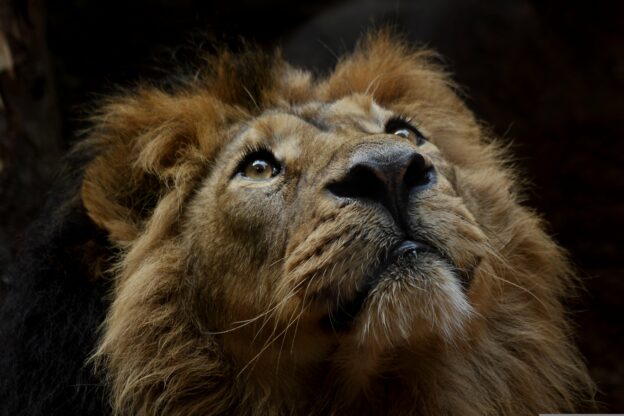Wildlife photography plays a very important role in the wildlife conservation movement. Every year we’re fortunate to witness rare moments captured by skill, precision, and luck of photographers who toil for their shot for years. Several of these images managed to strike a chord with us, so we decided to showcase the images and the stories behind them. From notorious snow leopards to glorious blue whales to heart-wrenching moments, we assure you these stories are one-of-a-kind. These photos are listed in no particular order of their impact, but it is an homage to the work the people behind the lens put alongside helpers and guides.
Ndakasi’s Passing

For 13 years, the caregivers at Virunga National Park, Democratic Republic of Congo took care of Ndakasi, an endangered mountain gorilla, orphaned as her mother was killed by poachers. Her story was captured by photographer Brent Stirton, who is well-known for photographing conservation efforts. The image is striking not only for its tenderness, but for the story it holds: a gorilla orphaned by violence, raised with devotion, and loved like family until the end. Stirton’s lens frames the extraordinary bond between species, reminding us that conservation is not just about saving animals in the abstract, but about relationships, compassion, and the fragile lives at stake. It’s a portrait of grief, but also of connection, one that lingers long after the first glance.
House of Bears
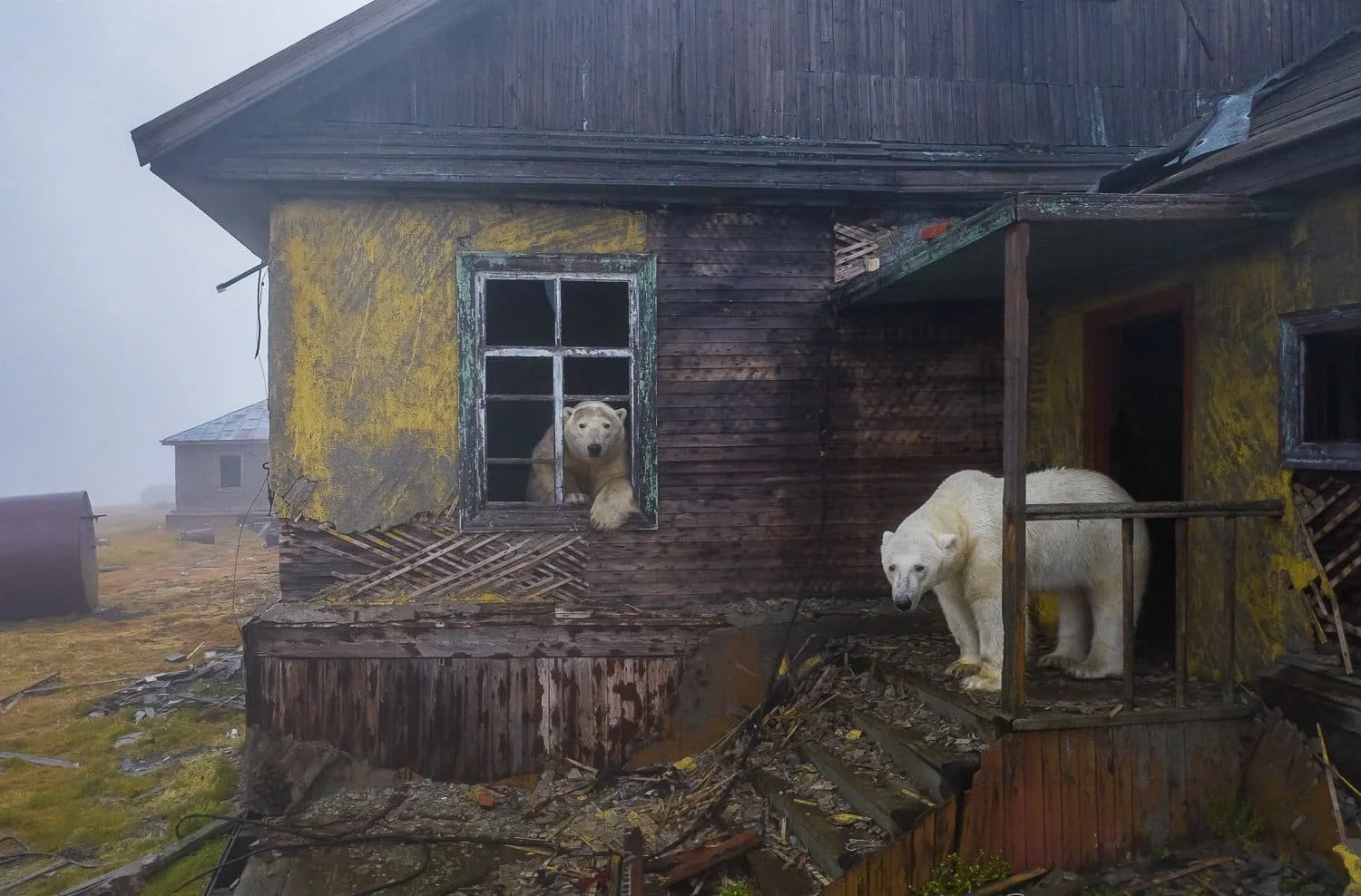
Photographer Dmitry Kokh captures a surreal moment where polar bears have taken refuge in the abandoned structures of a Soviet-era weather station on Kolyuchin Island in the Russian Arctic. Taken during a 2021 expedition, the image shows a polar bear peering out from a broken window, embodying the eerie stillness of a bygone era overtaken by nature’s resilience. The bears’ presence in these human-made ruins highlights the profound impact of climate change, which has forced these normally solitary creatures to adapt to new environments in search of food and shelter. Kokh’s use of a low-noise drone to capture this scene emphasises the delicate balance between human encroachment and wildlife, offering a poignant commentary on the intersection of nature and human history. The photograph has garnered international acclaim, winning top honours at the Nature Photographer of the Year Award and being featured in the Wildlife Photographer of the Year exhibition, underscoring its significance in wildlife conservation discourse.
Toxic Trip
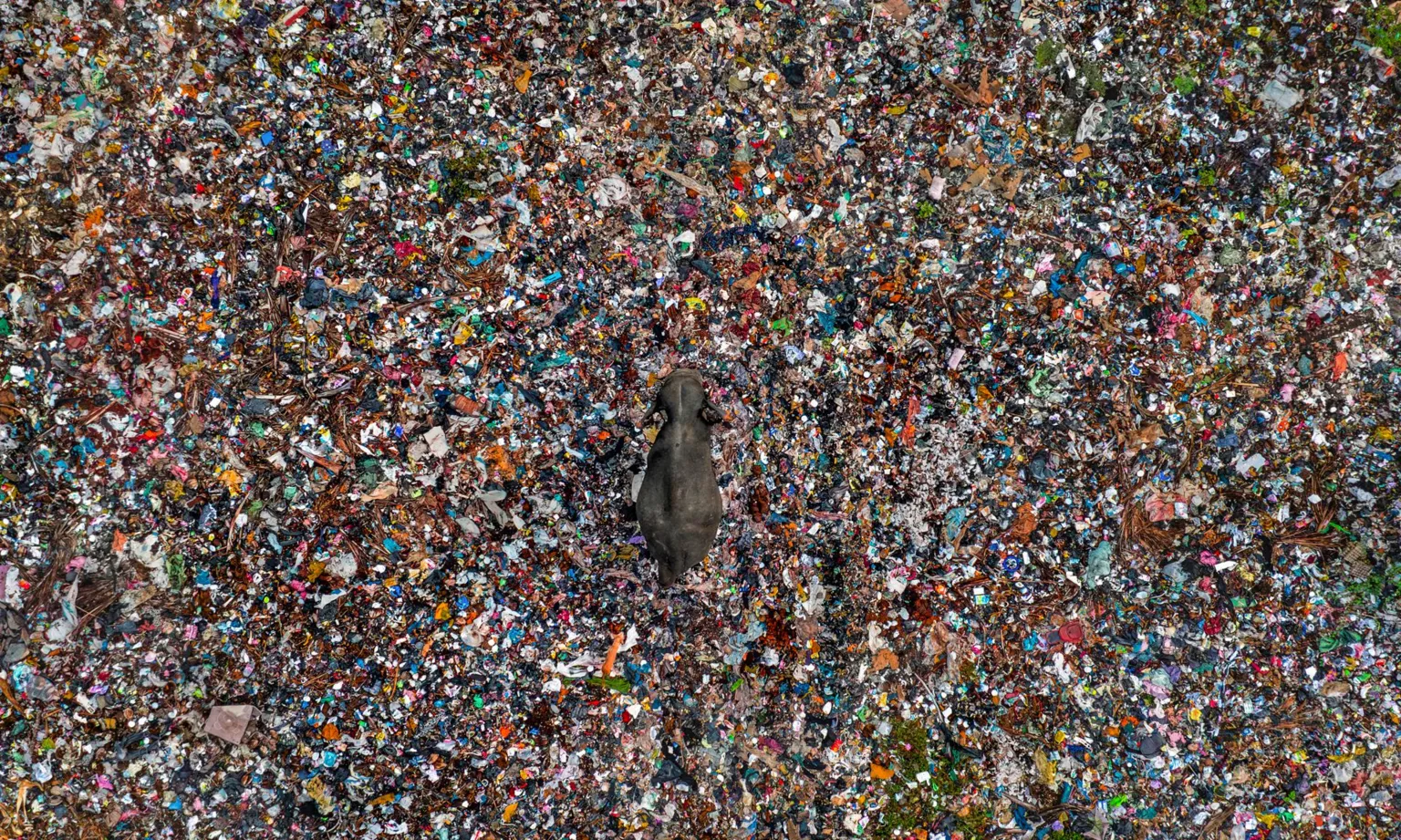
Sri Lankan photographer Lakshitha Karunarathna captured a grim scene of a lone Asian Elephant wading through a colourful landfill in Amapara, Sri Lanka. The image is a haunting testament to the collision of wildlife and human activity: amidst heaps of food scraps, the elephant is forced to ingest plastic and other harmful debris, a slow but deadly consequence of encroachment on its natural habitat. Over the past three years, Karunarathna has been documenting these human-induced threats to the region’s roughly 300 elephants—of which 20 have reportedly died over the last eight years—revealing not just the resilience of these majestic creatures, but the dire environmental pressures they face daily. The photo is both visually compelling and profoundly sobering, highlighting the urgent need for responsible waste management. This picture has already received several acclaims, including the Wildlife Photographer of the Year awards.
Waiting for Freedom
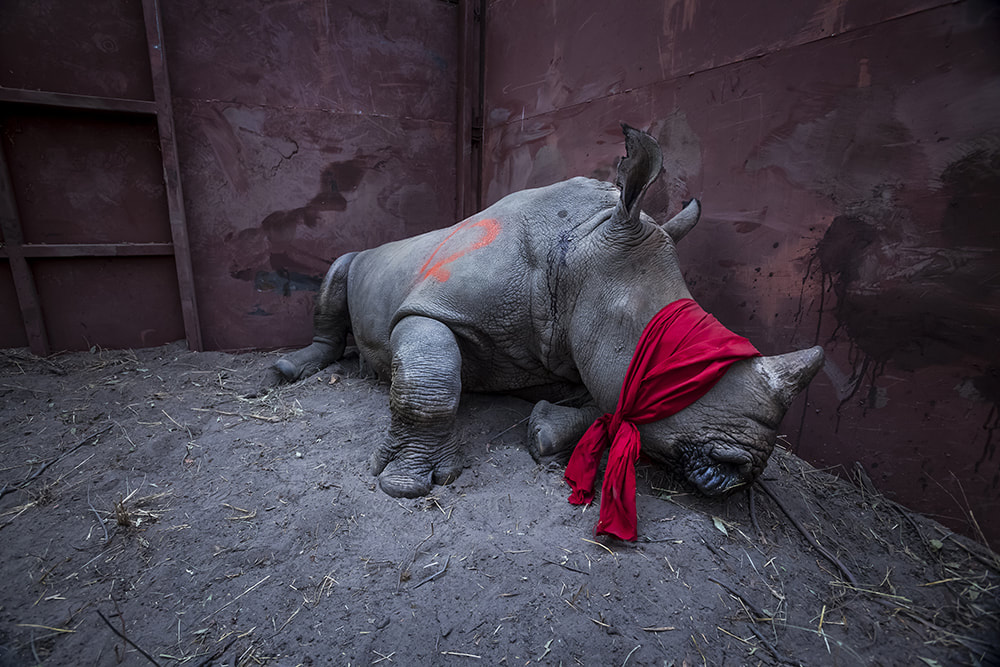
Known for his work in the Rhino Conservation project, photographer Neil Aldrige shot this Southern white rhinoceros with its face covered by a cloth awaiting release in Botswana’s Okavango Delta—earning him the coveted World Press Photo. This story underscores the urgent conservation efforts to protect rhinos from escalating poaching threats in South Africa. The rhino’s relocation to Botswana, a sanctuary free from the pervasive poaching crisis, symbolises a beacon of hope for a species classified as ‘near threatened’ due to the high value of their horns on the black market. Aldridge’s photograph not only documents a critical moment in wildlife conservation, but also serves as a powerful visual call to action, highlighting the resilience of rhinos and the dedicated efforts to ensure their survival.
The Surrogate Mother

Martin Buzora‘s poignant photograph was highly commended in the 2019 Wildlife Photographer of the Year People’s Choice Award. Captured at the Lewa Wildlife Conservancy in northern Kenya, the image portrays Elias Mugambi, a dedicated ranger, gently interacting with Kitui, an orphaned black rhino. Kitui’s mother was unable to care for her due to blindness, and the young rhino was left vulnerable to poaching. Elias often spends weeks away from his family, providing round-the-clock care to orphaned rhinos like Kitui, ensuring their safety and well-being in the sanctuary. Buzora’s photograph highlights the deep bond between humans and wildlife, emphasising the importance of conservation efforts and the tireless work of individuals like Elias in protecting endangered species.
No Place Like Home
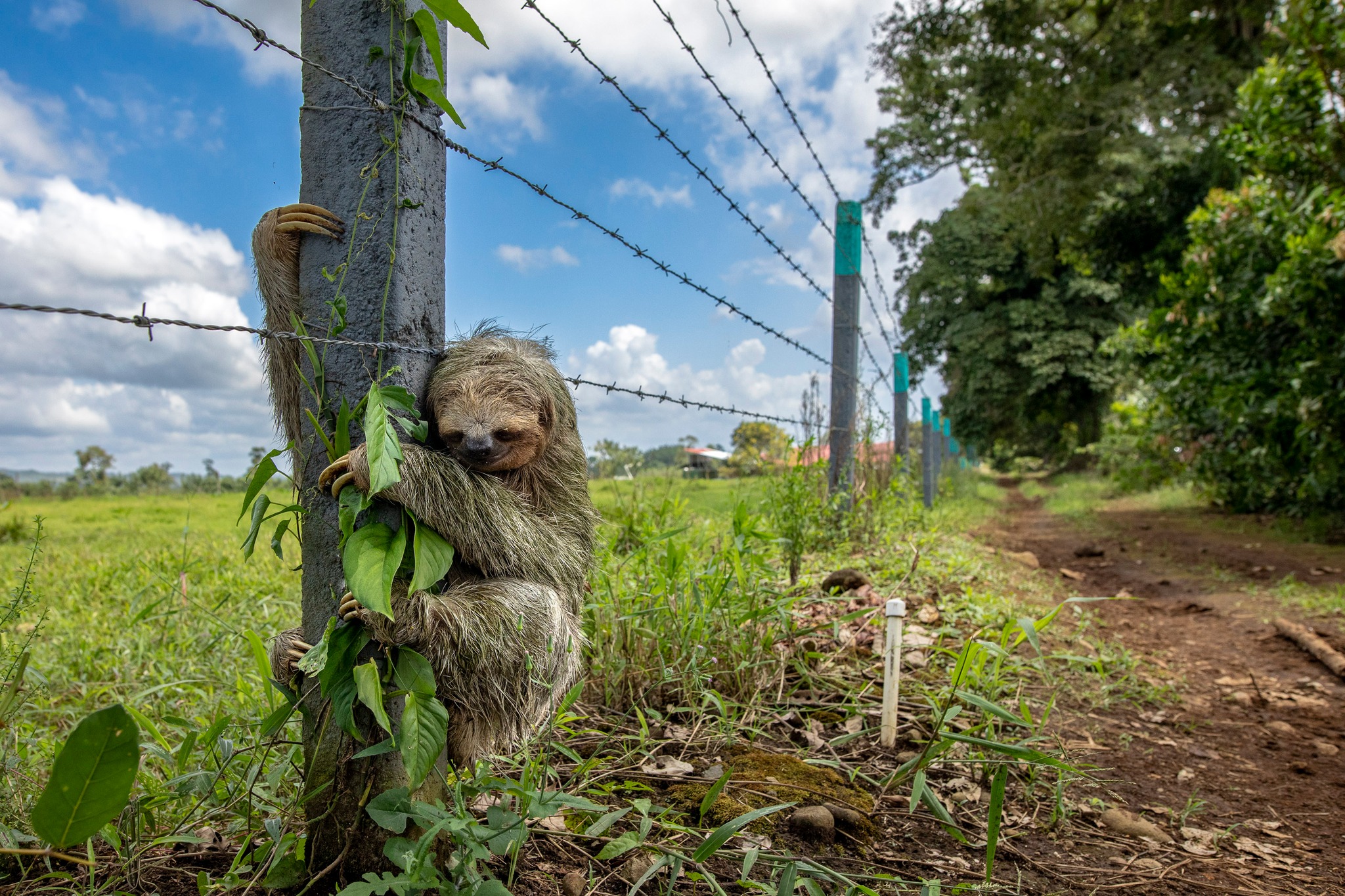
Emmanuel Tardy captured a brown-throated three-toed sloth clinging to a barbed wire fence post in Costa Rica’s Alajuela Province. The sloth, having crossed a road, instinctively grasped the fence, mistaking it for a tree—a desperate act reflecting the challenges posed by habitat fragmentation. Tardy’s image, which garnered a highly commended recognition in the 2025 Wildlife Photographer of the Year awards, underscores the urgency of preserving natural habitats and establishing wildlife corridors to ensure the survival of species like the sloth.
The Embrace
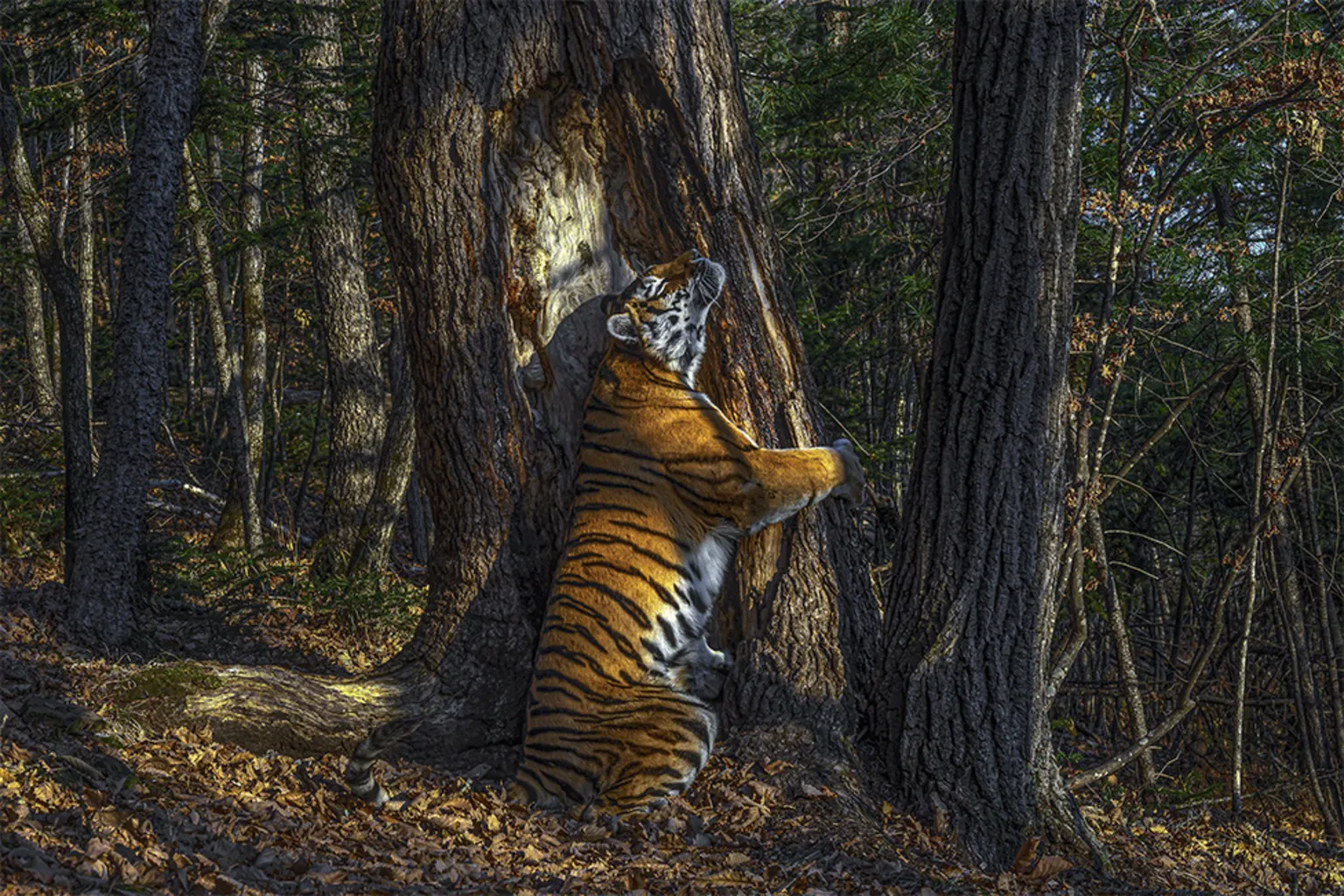
Sergey Gorshkov was awarded the Grand Title at the 2020 Wildlife Photographer of the Year competition. Captured in Russia’s Land of the Leopard National Park, the image depicts a female Amur tiger, also known as the Siberian tiger, embracing an ancient Manchurian fir tree. The tiger is scent-marking the tree by rubbing her cheek against its bark, a behaviour that communicates her presence and territorial boundaries to other tigers. Gorshkov employed motion-sensor cameras over a period of 11 months to document this rare and intimate moment. The photograph not only showcases the beauty and majesty of the Amur tiger, but also highlights the challenges faced by this critically endangered species, with only around 500 individuals remaining in the wild. The Embrace serves as a poignant reminder of the delicate balance between wildlife and their habitats, emphasising the importance of conservation efforts to protect these magnificent creatures.
Ice Bed
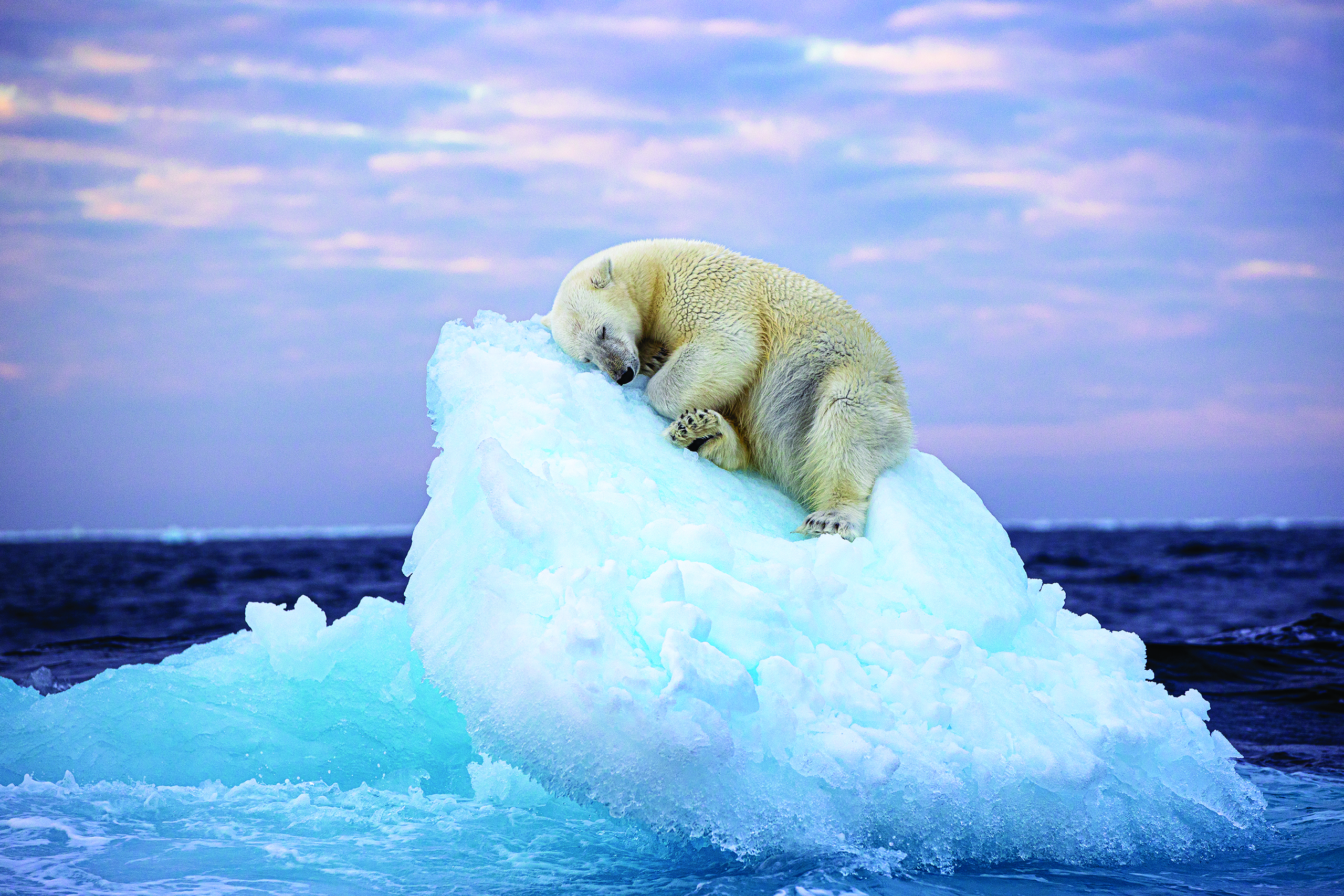
Nima Sarikhani photograph Ice Bed won the 2023 Wildlife Photographer of the Year People’s Choice Award, capturing a poignant moment of a young polar bear resting atop a small iceberg in Norway’s Svalbard archipelago. After three days of searching through thick fog, Sarikhani’s persistence paid off when he encountered the bear just before midnight. The bear used its strong paws to carve out a bed on the iceberg before drifting off to sleep under the midnight sun. Sarikhani’s image, chosen from over 75,000 votes, highlights the delicate balance between wildlife and their habitats, emphasising the impacts of climate change and habitat loss.
Sunset Moment

Yet another metaphorical representation of deforestation and habitat destruction, French photographer Olivier Puccia shot this picture of a baby Hanuman langur embracing its mother at a hilltop temple in the town of Ramtek, Maharashtra. The soft, serene sunlight envelopes the sky in warmth and the village below is sunk in a hue of blue, drawing a line between nature and humans’ development.

